A Guide to TPS55340RTER DC-DC Converter
16 Terminals 16-Pin TPS55340 DC DC Voltage Regulator SWITCHING REGULATOR 1 Outputs 94kHz~1.14MHz Tape & Reel (TR) 16-WFQFN Exposed Pad









16 Terminals 16-Pin TPS55340 DC DC Voltage Regulator SWITCHING REGULATOR 1 Outputs 94kHz~1.14MHz Tape & Reel (TR) 16-WFQFN Exposed Pad
TPS55340RTER is a 5A 40V Wide in Range DC-DC Converter. This article is going to explain the details and applications of the TPS55340RTER converter for your reference. Welcome your RFQ!

How does Buck Converter work? | DC-DC Converter
- What is TPS55340RTER?
- TPS55340RTER Pinout
- TPS55340RTER CAD Model
- TPS55340RTER Features
- Specifications
- TPS55340RTER Functional Block Diagram
- TPS55340RTER Applications
- TPS55340RTER Application Circuit
- What does DC-DC Converter do?
- Varieties of DC-DC Converters
- Parts with Similar Specs
- TPS55340RTER Dimensions Outline
- TPS55340RTER Manufacturer
What is TPS55340RTER?
The TPS55340RTER is a nonsynchronous monolithic switching regulator with an inbuilt 5-A, 40-V power switch. Boost, SEPIC, and isolated flyback are among the standard switching-regulator topologies that the device can be configured in. The device accepts a wide range of input voltages, allowing it to work with multi-cell batteries or regulated 3.3-V, 5-V, 12-V, and 24-V power rails.
The TPS55340RTER features an inbuilt oscillator and controls the output voltage using current mode PWM (pulse width modulation). An external resistor or synchronization to an external clock signal can be used to set the switching frequency of PWM. The switching frequency can be set anywhere between 100 kHz and 1.2 MHz by the user.
TPS55340RTER Pinout
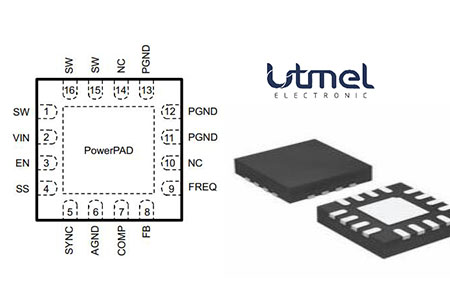
TPS55340RTER Pinout
TPS55340RTER CAD Model
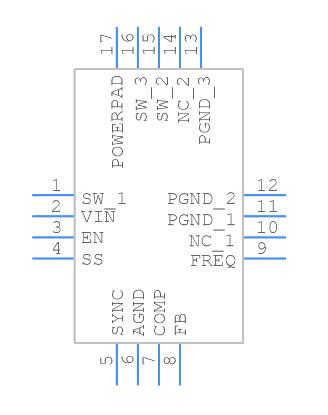
TPS55340RTER Symbol
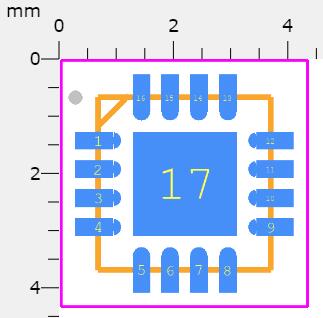
TPS55340RTER Footprint

TPS55340RTER 3D Model
TPS55340RTER Features
Internal 5-A, 40-V low-side MOSFET switch
2.9-V to 32-V input voltage range
±0.7% reference voltage
0.5-mA operating quiescent current
2.7-µA shutdown supply current
Fixed frequency current mode PWM control
Frequency adjustable from 100 kHz to 1.2 MHz
Synchronization capability to external clock
Adjustable soft-start time
Pulse skipping for higher efficiency at light loads
Cycle-by-cycle current limit, thermal shutdown, and UVLO protection
QFN-16 (3-mm × 3-mm) and HTSSOP-14 packages with PowerPAD™
Wide –40°C to 150°C operating TJ range
Create a custom design using the TPS55340 with the WEBENCH Power Designer
Specifications
- TypeParameter
- Lifecycle Status
Lifecycle Status refers to the current stage of an electronic component in its product life cycle, indicating whether it is active, obsolete, or transitioning between these states. An active status means the component is in production and available for purchase. An obsolete status indicates that the component is no longer being manufactured or supported, and manufacturers typically provide a limited time frame for support. Understanding the lifecycle status is crucial for design engineers to ensure continuity and reliability in their projects.
ACTIVE (Last Updated: 3 days ago) - Factory Lead Time12 Weeks
- Contact Plating
Contact plating (finish) provides corrosion protection for base metals and optimizes the mechanical and electrical properties of the contact interfaces.
Gold - Mount
In electronic components, the term "Mount" typically refers to the method or process of physically attaching or fixing a component onto a circuit board or other electronic device. This can involve soldering, adhesive bonding, or other techniques to secure the component in place. The mounting process is crucial for ensuring proper electrical connections and mechanical stability within the electronic system. Different components may have specific mounting requirements based on their size, shape, and function, and manufacturers provide guidelines for proper mounting procedures to ensure optimal performance and reliability of the electronic device.
Surface Mount - Mounting Type
The "Mounting Type" in electronic components refers to the method used to attach or connect a component to a circuit board or other substrate, such as through-hole, surface-mount, or panel mount.
Surface Mount - Package / Case
refers to the protective housing that encases an electronic component, providing mechanical support, electrical connections, and thermal management.
16-WFQFN Exposed Pad - Number of Pins16
- Operating Temperature
The operating temperature is the range of ambient temperature within which a power supply, or any other electrical equipment, operate in. This ranges from a minimum operating temperature, to a peak or maximum operating temperature, outside which, the power supply may fail.
-40°C~125°C TA - Packaging
Semiconductor package is a carrier / shell used to contain and cover one or more semiconductor components or integrated circuits. The material of the shell can be metal, plastic, glass or ceramic.
Tape & Reel (TR) - JESD-609 Code
The "JESD-609 Code" in electronic components refers to a standardized marking code that indicates the lead-free solder composition and finish of electronic components for compliance with environmental regulations.
e4 - Pbfree Code
The "Pbfree Code" parameter in electronic components refers to the code or marking used to indicate that the component is lead-free. Lead (Pb) is a toxic substance that has been widely used in electronic components for many years, but due to environmental concerns, there has been a shift towards lead-free alternatives. The Pbfree Code helps manufacturers and users easily identify components that do not contain lead, ensuring compliance with regulations and promoting environmentally friendly practices. It is important to pay attention to the Pbfree Code when selecting electronic components to ensure they meet the necessary requirements for lead-free applications.
yes - Part Status
Parts can have many statuses as they progress through the configuration, analysis, review, and approval stages.
Active - Moisture Sensitivity Level (MSL)
Moisture Sensitivity Level (MSL) is a standardized rating that indicates the susceptibility of electronic components, particularly semiconductors, to moisture-induced damage during storage and the soldering process, defining the allowable exposure time to ambient conditions before they require special handling or baking to prevent failures
2 (1 Year) - Number of Terminations16
- ECCN Code
An ECCN (Export Control Classification Number) is an alphanumeric code used by the U.S. Bureau of Industry and Security to identify and categorize electronic components and other dual-use items that may require an export license based on their technical characteristics and potential for military use.
EAR99 - Terminal Position
In electronic components, the term "Terminal Position" refers to the physical location of the connection points on the component where external electrical connections can be made. These connection points, known as terminals, are typically used to attach wires, leads, or other components to the main body of the electronic component. The terminal position is important for ensuring proper connectivity and functionality of the component within a circuit. It is often specified in technical datasheets or component specifications to help designers and engineers understand how to properly integrate the component into their circuit designs.
QUAD - Peak Reflow Temperature (Cel)
Peak Reflow Temperature (Cel) is a parameter that specifies the maximum temperature at which an electronic component can be exposed during the reflow soldering process. Reflow soldering is a common method used to attach electronic components to a circuit board. The Peak Reflow Temperature is crucial because it ensures that the component is not damaged or degraded during the soldering process. Exceeding the specified Peak Reflow Temperature can lead to issues such as component failure, reduced performance, or even permanent damage to the component. It is important for manufacturers and assemblers to adhere to the recommended Peak Reflow Temperature to ensure the reliability and functionality of the electronic components.
260 - Terminal Pitch
The center distance from one pole to the next.
0.5mm - Base Part Number
The "Base Part Number" (BPN) in electronic components serves a similar purpose to the "Base Product Number." It refers to the primary identifier for a component that captures the essential characteristics shared by a group of similar components. The BPN provides a fundamental way to reference a family or series of components without specifying all the variations and specific details.
TPS55340 - Function
The parameter "Function" in electronic components refers to the specific role or purpose that the component serves within an electronic circuit. It defines how the component interacts with other elements, influences the flow of electrical signals, and contributes to the overall behavior of the system. Functions can include amplification, signal processing, switching, filtering, and energy storage, among others. Understanding the function of each component is essential for designing effective and efficient electronic systems.
Step-Up - Number of Outputs1
- Voltage - Input (Max)
Voltage - Input (Max) is a parameter in electronic components that specifies the maximum voltage that can be safely applied to the input of the component without causing damage. This parameter is crucial for ensuring the proper functioning and longevity of the component. Exceeding the maximum input voltage can lead to electrical overstress, which may result in permanent damage or failure of the component. It is important to carefully adhere to the specified maximum input voltage to prevent any potential issues and maintain the reliability of the electronic system.
32V - Output Voltage
Output voltage is a crucial parameter in electronic components that refers to the voltage level produced by the component as a result of its operation. It represents the electrical potential difference between the output terminal of the component and a reference point, typically ground. The output voltage is a key factor in determining the performance and functionality of the component, as it dictates the level of voltage that will be delivered to the connected circuit or load. It is often specified in datasheets and technical specifications to ensure compatibility and proper functioning within a given system.
38V - Output Type
The "Output Type" parameter in electronic components refers to the type of signal or data that is produced by the component as an output. This parameter specifies the nature of the output signal, such as analog or digital, and can also include details about the voltage levels, current levels, frequency, and other characteristics of the output signal. Understanding the output type of a component is crucial for ensuring compatibility with other components in a circuit or system, as well as for determining how the output signal can be utilized or processed further. In summary, the output type parameter provides essential information about the nature of the signal that is generated by the electronic component as its output.
Adjustable - Max Output Current
The maximum current that can be supplied to the load.
5A - Input Voltage-Nom
Input Voltage-Nom refers to the nominal or rated input voltage that an electronic component or device is designed to operate within. This parameter specifies the voltage level at which the component is expected to function optimally and safely. It is important to ensure that the actual input voltage supplied to the component does not exceed this nominal value to prevent damage or malfunction. Manufacturers provide this specification to guide users in selecting the appropriate power supply or input voltage source for the component. It is a critical parameter to consider when designing or using electronic circuits to ensure reliable performance and longevity of the component.
5V - Max Supply Voltage
In general, the absolute maximum common-mode voltage is VEE-0.3V and VCC+0.3V, but for products without a protection element at the VCC side, voltages up to the absolute maximum rated supply voltage (i.e. VEE+36V) can be supplied, regardless of supply voltage.
32V - Min Supply Voltage
The minimum supply voltage (V min ) is explored for sequential logic circuits by statistically simulating the impact of within-die process variations and gate-dielectric soft breakdown on data retention and hold time.
2.9V - Analog IC - Other Type
Analog IC - Other Type is a parameter used to categorize electronic components that are integrated circuits (ICs) designed for analog signal processing but do not fall into more specific subcategories such as amplifiers, comparators, or voltage regulators. These ICs may include specialized analog functions such as analog-to-digital converters (ADCs), digital-to-analog converters (DACs), voltage references, or signal conditioning circuits. They are typically used in various applications where precise analog signal processing is required, such as in audio equipment, instrumentation, communication systems, and industrial control systems. Manufacturers provide detailed specifications for these components to help engineers select the most suitable IC for their specific design requirements.
SWITCHING REGULATOR - Output Configuration
Output Configuration in electronic components refers to the arrangement or setup of the output pins or terminals of a device. It defines how the output signals are structured and how they interact with external circuits or devices. The output configuration can determine the functionality and compatibility of the component in a circuit design. Common types of output configurations include single-ended, differential, open-drain, and push-pull configurations, each serving different purposes and applications in electronic systems. Understanding the output configuration of a component is crucial for proper integration and operation within a circuit.
Positive, Isolation Capable - Quiescent Current
The quiescent current is defined as the current level in the amplifier when it is producing an output of zero.
500μA - Max Output Voltage
The maximum output voltage refers to the dynamic area beyond which the output is saturated in the positive or negative direction, and is limited according to the load resistance value.
38V - Topology
In the context of electronic components, "topology" refers to the arrangement or configuration of the components within a circuit or system. It defines how the components are connected to each other and how signals flow between them. The choice of topology can significantly impact the performance, efficiency, and functionality of the electronic system. Common topologies include series, parallel, star, mesh, and hybrid configurations, each with its own advantages and limitations. Designers carefully select the appropriate topology based on the specific requirements of the circuit to achieve the desired performance and functionality.
Boost - Control Mode
In electronic components, "Control Mode" refers to the method or mode of operation used to regulate or control the behavior of the component. This parameter determines how the component responds to input signals or commands to achieve the desired output. The control mode can vary depending on the specific component and its intended function, such as voltage regulation, current limiting, or frequency modulation. Understanding the control mode of an electronic component is crucial for proper integration and operation within a circuit or system.
CURRENT-MODE - Frequency - Switching
"Frequency - Switching" in electronic components refers to the rate at which a device, such as a transistor or switching regulator, turns on and off during operation. This parameter is crucial in determining the efficiency and performance of power converters, oscillators, and other circuits that rely on rapid switching. Higher switching frequencies typically allow for smaller component sizes but may require more advanced design considerations to manage heat and electromagnetic interference.
94kHz~1.14MHz - Control Technique
In electronic components, "Control Technique" refers to the method or approach used to regulate and manage the operation of the component. This parameter is crucial in determining how the component functions within a circuit or system. Different control techniques can include analog control, digital control, pulse-width modulation (PWM), and various feedback mechanisms. The choice of control technique can impact the performance, efficiency, and overall functionality of the electronic component. It is important to select the appropriate control technique based on the specific requirements and characteristics of the application in which the component will be used.
PULSE WIDTH MODULATION - Synchronous Rectifier
Synchronous rectification is a technique for improving the efficiency of rectification by replacing diodes with actively controlled switches, usually power MOSFETs or power bipolar junction transistors (BJT).
No - Min Output Voltage
Min Output Voltage refers to the lowest voltage level that an electronic component, such as a voltage regulator or power supply, can provide reliably under specified conditions. It indicates the minimum threshold required for proper operation of connected devices. Operating below this voltage may lead to device malfunction or failure to operate as intended.
2.9V - Max Duty Cycle
Max Duty Cycle refers to the maximum percentage of time that an electronic component, such as a switch or a power supply, can be in an "on" state during a defined time period. It is an important parameter in pulse-width modulated (PWM) systems and helps determine how often a device can operate without overheating or sustaining damage. By specifying the maximum duty cycle, manufacturers provide guidance on the safe operational limits of the component, ensuring reliability and efficiency in various applications.
96 % - Max Junction Temperature (Tj)
Max Junction Temperature (Tj) refers to the maximum allowable temperature at the junction of a semiconductor device, such as a transistor or integrated circuit. It is a critical parameter that influences the performance, reliability, and lifespan of the component. Exceeding this temperature can lead to thermal runaway, breakdown, or permanent damage to the device. Proper thermal management is essential to ensure the junction temperature remains within safe operating limits during device operation.
150°C - Ambient Temperature Range High
This varies from person to person, but it is somewhere between 68 and 77 degrees F on average. The temperature setting that is comfortable for an individual may fluctuate with humidity and outside temperature as well. The temperature of an air conditioned room can also be considered ambient temperature.
125°C - Height800μm
- Length3mm
- Width3mm
- Thickness
Thickness in electronic components refers to the measurement of how thick a particular material or layer is within the component structure. It can pertain to various aspects, such as the thickness of a substrate, a dielectric layer, or conductive traces. This parameter is crucial as it impacts the electrical, mechanical, and thermal properties of the component, influencing its performance and reliability in electronic circuits.
750μm - REACH SVHC
The parameter "REACH SVHC" in electronic components refers to the compliance with the Registration, Evaluation, Authorization, and Restriction of Chemicals (REACH) regulation regarding Substances of Very High Concern (SVHC). SVHCs are substances that may have serious effects on human health or the environment, and their use is regulated under REACH to ensure their safe handling and minimize their impact.Manufacturers of electronic components need to declare if their products contain any SVHCs above a certain threshold concentration and provide information on the safe use of these substances. This information allows customers to make informed decisions about the potential risks associated with using the components and take appropriate measures to mitigate any hazards.Ensuring compliance with REACH SVHC requirements is essential for electronics manufacturers to meet regulatory standards, protect human health and the environment, and maintain transparency in their supply chain. It also demonstrates a commitment to sustainability and responsible manufacturing practices in the electronics industry.
No SVHC - RoHS Status
RoHS means “Restriction of Certain Hazardous Substances” in the “Hazardous Substances Directive” in electrical and electronic equipment.
ROHS3 Compliant - Lead Free
Lead Free is a term used to describe electronic components that do not contain lead as part of their composition. Lead is a toxic material that can have harmful effects on human health and the environment, so the electronics industry has been moving towards lead-free components to reduce these risks. Lead-free components are typically made using alternative materials such as silver, copper, and tin. Manufacturers must comply with regulations such as the Restriction of Hazardous Substances (RoHS) directive to ensure that their products are lead-free and environmentally friendly.
Lead Free
TPS55340RTER Functional Block Diagram

TPS55340RTER Functional Block Diagram
TPS55340RTER Applications
3.3-V, 5-V, 12-V, 24-V power conversion
Boost, SEPIC, and flyback topologies
Thunderbolt port, USB Type-C power delivery, power docking for tablets, and portable PCs
Industrial power systems
ADSL modems
TPS55340RTER Application Circuit
TPS55340RTER Application Circuit

TPS55340RTER Application Circuit
What does DC-DC Converter do?
DC-DC converters are high-frequency power conversion circuits that smooth out switching noise into regulated DC voltages using high-frequency switching and inductors, transformers, and capacitors.
Varieties of DC-DC Converters
DC-DC converters come in non-isolated and isolated varieties. Isolation is determined by whether or not the input ground is connected to the output ground.
The buck, boost, buck-boost, and SEPIC converters are four popular topologies that designers may find useful.
1 Buck Converter
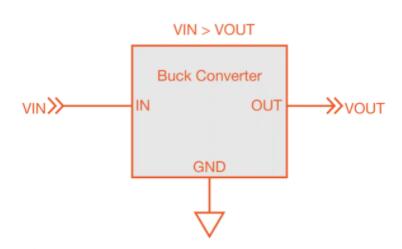
A buck converter reduces the voltage, resulting in a voltage that is lower than the input voltage. From a 5 V USB supply, a buck converter might be used to charge a lithium-ion battery to 4.2 V.
2 Boost Converters
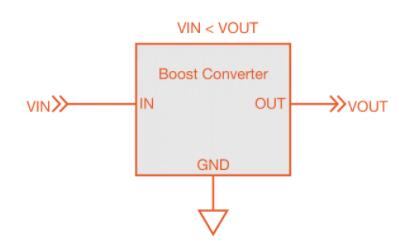
A boost converter increases the voltage by a factor of two, resulting in a voltage that is higher than the input voltage. A boost converter could be used to power a string of LED s or generate a 5 V USB output from a lithium battery.
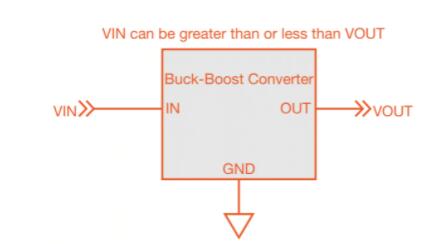
A buck-boost converter steps a voltage up or down, resulting in a voltage that is equal to, higher than, or lower than the input voltage. To get a 12 V output from a 12 V battery, a buck-boost could be employed. The voltage of a 12V battery can range from 10 to 14.7 volts. A single cell might also be used to power an LED with a buck-boost, The forward voltage loss of an LED can be as high as 3 volts. The voltage of a lithium battery cell can range from 2.5 to 4.2 volts. Positive and negative voltages are produced by buck-boosts.
4 SEPIC Converters
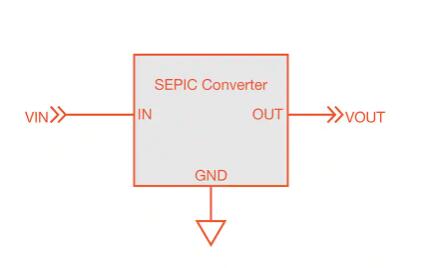
A SEPIC converter can also step a voltage up or down, resulting in a voltage that is equal to, higher than, or lower than the input voltage. A SEPIC is similar to a buck-boost in that it is used for similar applications, but it has some advantages in particular cases.
Parts with Similar Specs
- ImagePart NumberManufacturerPackage / CaseNumber of PinsNumber of OutputsMax Output CurrentFrequency - SwitchingInput Voltage-NomVoltage - Input (Max)Min Output VoltageOutput VoltageMax Output VoltageView Compare
TPS55340RTER
16-WFQFN Exposed Pad
16
1
5 A
94kHz ~ 1.14MHz
5 V
32V
2.9 V
38 V
38 V
16-VFQFN Exposed Pad
16
1
5 A
-
3.3 V
-
600 mV
4.62 V
4.62 V
16-WFQFN Exposed Pad
16
1
5 A
94kHz ~ 1.14MHz
5 V
-
2.9 V
22 V
22 V
14-PowerTSSOP (0.173, 4.40mm Width)
14
1
5 A
94kHz ~ 1.14MHz
5 V
32V
2.9 V
38 V
38 V
14-PowerTSSOP (0.173, 4.40mm Width)
14
1
5 A
94kHz ~ 1.14MHz
5 V
32V
2.9 V
38 V
38 V
TPS55340RTER Dimensions Outline
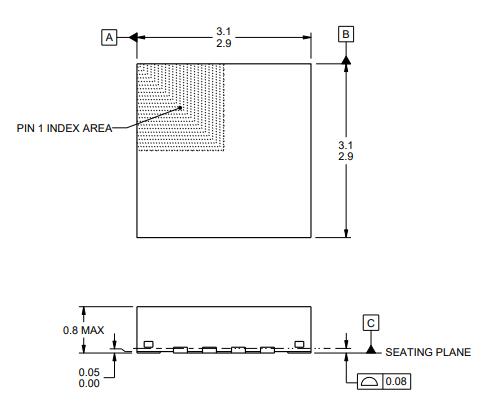
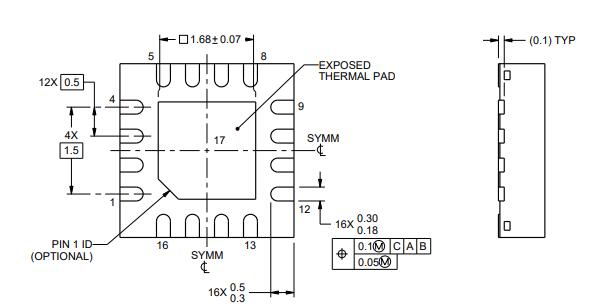
TPS55340RTER Dimensions Outline
TPS55340RTER Manufacturer
Texas Instruments Incorporated (TI) is an American technology company headquartered in Dallas, Texas, that designs and manufactures semiconductors and various integrated circuits, which it sells to electronics designers and manufacturers globally. It is one of the top 10 semiconductor companies worldwide based on sales volume.
What does the TPS55340RTER use to control the output voltage?
The current mode PWM
What type of batteries does the TPS55340RTER work with?
Multicellular batteries
What are the types of DC-to-DC converter?
There are two types of DC/DC converters: linear and switched.
What is TPS55340RTER used for?
These are commonly used in automobiles, portable chargers, and portable DVD players.
What is the range of TPS55340RTER operating temperature?
-40°C~125°C TA
How many pins of TPS55340RTER?
16 pins
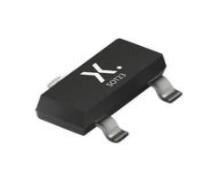 TL431BQDBZR Shunt regulator: NXP, SOT-23, TL431BQDBZR Datasheet
TL431BQDBZR Shunt regulator: NXP, SOT-23, TL431BQDBZR Datasheet10 February 20221288
 A Comprehensive Guide to LTC7541AKSW#PBF Digital to Analog Converter
A Comprehensive Guide to LTC7541AKSW#PBF Digital to Analog Converter06 March 2024130
 1N5404 Rectifier : Pinout, Price, Datasheet
1N5404 Rectifier : Pinout, Price, Datasheet25 August 20211371
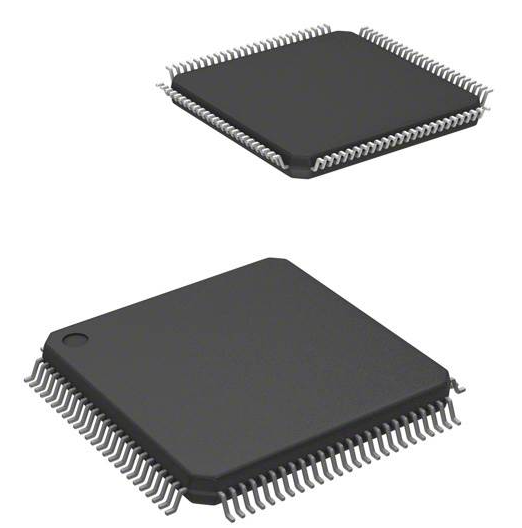 LPC1768FBD100: Overview, Features, and Applications
LPC1768FBD100: Overview, Features, and Applications12 December 2023579
 TMC5160 vs. TMC2209: How to Differentiate?
TMC5160 vs. TMC2209: How to Differentiate?18 April 202218768
 LM111 Differential Comparators: Alternative, Pinout and Datasheet
LM111 Differential Comparators: Alternative, Pinout and Datasheet16 July 20211378
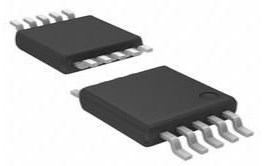 MAX3311 Transceiver: Pinout, Equivalent and Datasheet
MAX3311 Transceiver: Pinout, Equivalent and Datasheet21 January 2022550
 LM348 Operational Amplifier: Pinout, Datasheet and Application
LM348 Operational Amplifier: Pinout, Datasheet and Application22 September 202110277
 What are Motherboards?
What are Motherboards?23 June 20215644
 Unveiling the Magic Behind TWS Earbuds: An Analysis of Their Market, Working, and Core Components
Unveiling the Magic Behind TWS Earbuds: An Analysis of Their Market, Working, and Core Components24 July 20233504
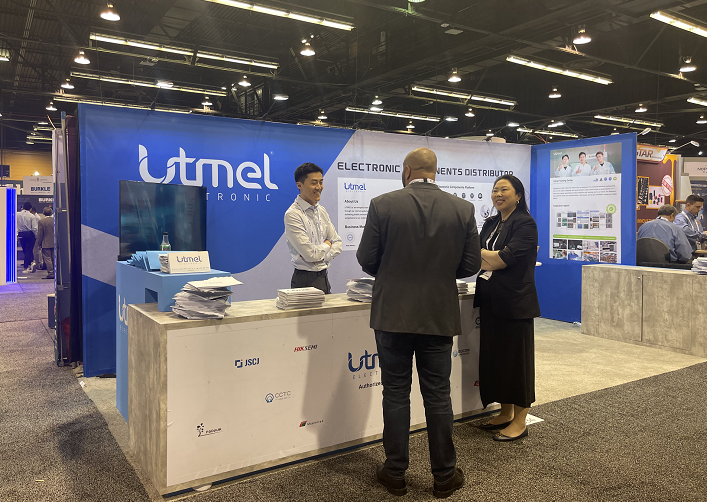 Electronic Components Distributor Utmel to Showcase at 2024 IPC APEX EXPO
Electronic Components Distributor Utmel to Showcase at 2024 IPC APEX EXPO10 April 20243880
 A New Way of Thinking About the "Trolley Problem" of Artificial Intelligence
A New Way of Thinking About the "Trolley Problem" of Artificial Intelligence27 May 20221426
 What is a USB Flash Drive?
What is a USB Flash Drive?25 May 20212933
 ON Semiconductor's Transformation and SiC Rollout Positions it for High-Growth Opportunities
ON Semiconductor's Transformation and SiC Rollout Positions it for High-Growth Opportunities25 September 2023492
 Working Principles and Applications of Pressure Sensors
Working Principles and Applications of Pressure Sensors07 April 202533967
 All You Need to Know about Wireless Access Point
All You Need to Know about Wireless Access Point26 October 20212636
Texas Instruments
In Stock: 30000
United States
China
Canada
Japan
Russia
Germany
United Kingdom
Singapore
Italy
Hong Kong(China)
Taiwan(China)
France
Korea
Mexico
Netherlands
Malaysia
Austria
Spain
Switzerland
Poland
Thailand
Vietnam
India
United Arab Emirates
Afghanistan
Åland Islands
Albania
Algeria
American Samoa
Andorra
Angola
Anguilla
Antigua & Barbuda
Argentina
Armenia
Aruba
Australia
Azerbaijan
Bahamas
Bahrain
Bangladesh
Barbados
Belarus
Belgium
Belize
Benin
Bermuda
Bhutan
Bolivia
Bonaire, Sint Eustatius and Saba
Bosnia & Herzegovina
Botswana
Brazil
British Indian Ocean Territory
British Virgin Islands
Brunei
Bulgaria
Burkina Faso
Burundi
Cabo Verde
Cambodia
Cameroon
Cayman Islands
Central African Republic
Chad
Chile
Christmas Island
Cocos (Keeling) Islands
Colombia
Comoros
Congo
Congo (DRC)
Cook Islands
Costa Rica
Côte d’Ivoire
Croatia
Cuba
Curaçao
Cyprus
Czechia
Denmark
Djibouti
Dominica
Dominican Republic
Ecuador
Egypt
El Salvador
Equatorial Guinea
Eritrea
Estonia
Eswatini
Ethiopia
Falkland Islands
Faroe Islands
Fiji
Finland
French Guiana
French Polynesia
Gabon
Gambia
Georgia
Ghana
Gibraltar
Greece
Greenland
Grenada
Guadeloupe
Guam
Guatemala
Guernsey
Guinea
Guinea-Bissau
Guyana
Haiti
Honduras
Hungary
Iceland
Indonesia
Iran
Iraq
Ireland
Isle of Man
Israel
Jamaica
Jersey
Jordan
Kazakhstan
Kenya
Kiribati
Kosovo
Kuwait
Kyrgyzstan
Laos
Latvia
Lebanon
Lesotho
Liberia
Libya
Liechtenstein
Lithuania
Luxembourg
Macao(China)
Madagascar
Malawi
Maldives
Mali
Malta
Marshall Islands
Martinique
Mauritania
Mauritius
Mayotte
Micronesia
Moldova
Monaco
Mongolia
Montenegro
Montserrat
Morocco
Mozambique
Myanmar
Namibia
Nauru
Nepal
New Caledonia
New Zealand
Nicaragua
Niger
Nigeria
Niue
Norfolk Island
North Korea
North Macedonia
Northern Mariana Islands
Norway
Oman
Pakistan
Palau
Palestinian Authority
Panama
Papua New Guinea
Paraguay
Peru
Philippines
Pitcairn Islands
Portugal
Puerto Rico
Qatar
Réunion
Romania
Rwanda
Samoa
San Marino
São Tomé & Príncipe
Saudi Arabia
Senegal
Serbia
Seychelles
Sierra Leone
Sint Maarten
Slovakia
Slovenia
Solomon Islands
Somalia
South Africa
South Sudan
Sri Lanka
St Helena, Ascension, Tristan da Cunha
St. Barthélemy
St. Kitts & Nevis
St. Lucia
St. Martin
St. Pierre & Miquelon
St. Vincent & Grenadines
Sudan
Suriname
Svalbard & Jan Mayen
Sweden
Syria
Tajikistan
Tanzania
Timor-Leste
Togo
Tokelau
Tonga
Trinidad & Tobago
Tunisia
Turkey
Turkmenistan
Turks & Caicos Islands
Tuvalu
U.S. Outlying Islands
U.S. Virgin Islands
Uganda
Ukraine
Uruguay
Uzbekistan
Vanuatu
Vatican City
Venezuela
Wallis & Futuna
Yemen
Zambia
Zimbabwe














